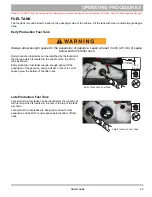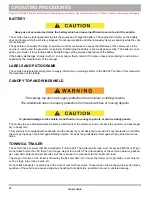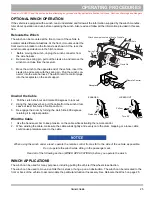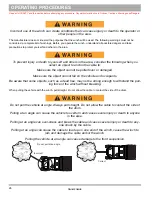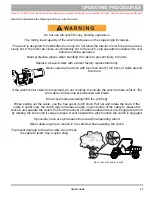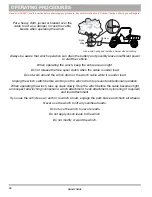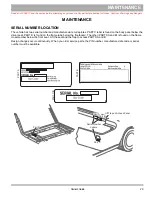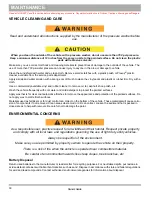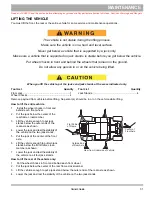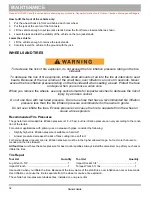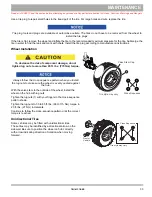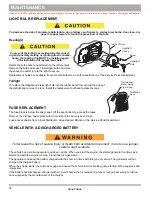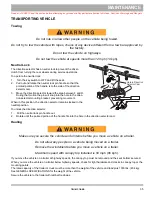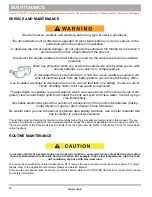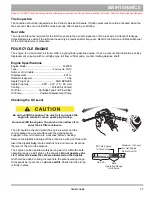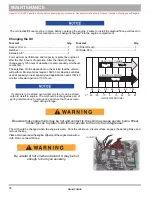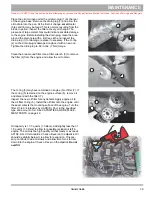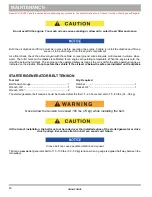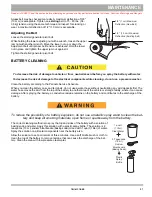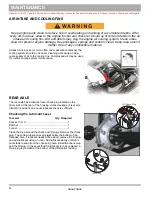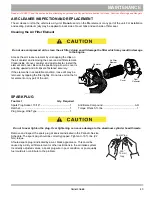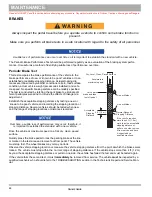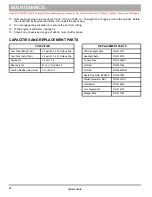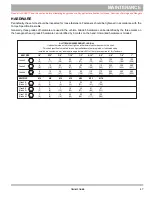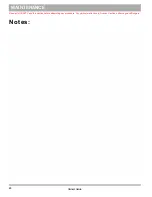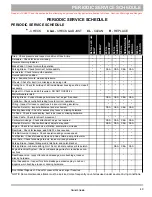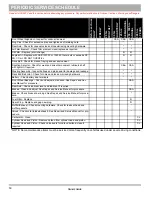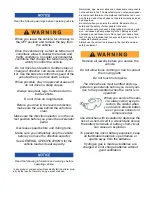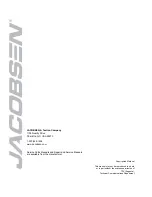
B
MAINTENANCE
Read all of SAFETY and this section before attempting any procedure. Pay particular attention to Notices, Cautions, Warnings and Dangers.
37
Owner’s Guide
Tire Inspection
Tire condition should be inspected per the Periodic Service Schedule. Inflation pressures should be checked when the
tires are cool. Be sure to install the valve dust cap after checking or inflating.
Rear Axle
The only maintenance required for the first five years is the periodic inspection of the rear axle for lubricant leakage.
Unless leakage is evident, the lubricant need only be replaced after five years. Refer to the Service and Repair Manual
for the fluid replacement procedure.
FOUR CYCLE ENGINE
The engine is an air cooled, 4-stroke, OHV, single cylinder gasoline engine. It has a pressure fed lubrication positive
displacement oil pump with a cartridge type full flow oil filter and a counter rotating balance shaft.
Engine Specifications
Engine Model ...................................................FJ400D
Type.....................................................Four cycle, OHV
Number of Cylinders.................................................... 1
Displacement.......................................................401 cc
Rated Horsepower ............................................... 13 hp
Spark Plug Type ..................................... NGK BPR2ES
Spark Plug Gap ...................028" - .031" (.70 - .80 mm)
Cooling ............................................. Forced Air Cooled
Oil Filter ......................... Cartridge Type Full Flow Filter
Oil Pump.......................... Positive Displacement Pump
Checking the Oil Level
l
Do not overfill the engine. Too much oil can cause the
engine to smoke or cause spark plug fouling.
Do not overfill the engine. Too much oil can allow oil to
enter the air filter enclosure.
The oil should be checked when the engine is warm and the
vehicle parked on a level surface with the parking brake
engaged. Allow oil to drain into crankcase before checking.
Remove the dipstick and wipe off the entire area with a lint free cloth.
Insert the dipstick
fully
into the dipstick hole and remove. Examine
the level of the oil on the dipstick.
The engine can be operated safely as long as oil is within the safe
operating range as indicated on the dip stick.
Do not operate vehi-
cle if oil level is below the safe area indicated on the dipstick.
Oil should be added to bring the level into the safe operating range.
Oil expands as it gets hot, so
do not overfill
. Check that the oil cap
is firmly in place.
Maximum Oil Level
For Hot Engine
Do Not Overfill
Fill Cold Engine
To This Point
Safe
Operating Range
Hot Engine
Add Oil

